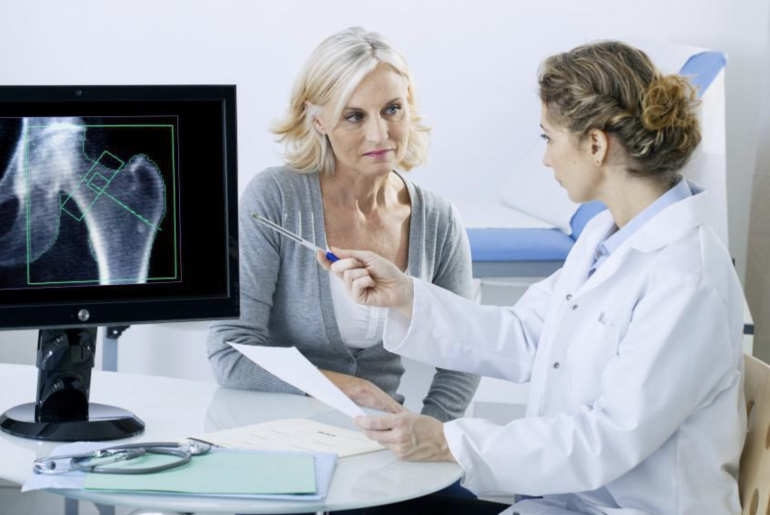Osteoporosis is a health condition that causes your bones to weaken, such that they are likely to break even with minor stresses such as bending and sneezing. Most of the time, patients with this problem get fractures in their hips, wrist, and spine. However, osteoporosis-related fractures can occur in other bones, such as the arm or pelvis. You may not experience pain if you have osteoarthritis until you break a bone. Although fractures are a common sign of osteoporosis, older adults often develop other characteristics such as loss of height and stooped posture. There is no cure for osteoporosis, but your Laurel physician assistant may recommend bone-strengthening medicines to prevent fractures.
What causes osteoporosis?
Bone tissues constantly renew as old bone is broken down. During your younger years, your body replenishes bones faster than it loses. As a result, your bone mass increases. However, bone renewal slows down after your early 20’s, and by age 30, most people will have reached their peak bone mass. Bone loss is a normal consequence of aging, but some people lose bone faster than average. Your risk of developing osteoporosis partly depends on the bone mass you attained in your youth. You are less likely to develop osteoporosis if you have a higher peak bone mass.
Risk factors for osteoporosis
While anyone can develop this bone problem, some people are more susceptible than others. For instance, bone loss in women is rapid in the first few years after menopause, so they are more likely to have osteoporosis, unlike men. Other factors that increase your risk for this health condition include:
- Family history. A predisposition to this problem in your family increases your likelihood of developing it. It is especially true if any of your parents fractured their hip.
- Taking a high dose of steroid tablets for more than three months destroys the cartilage and bone, increasing your risk for osteoporosis.
- Eating disorders such as anorexia and bulimia
- Body frame size. Women and men with small body frames may have less bone mass to draw from as they age.
- Heavy drinking and smoking
Treating osteoporosis
Before your doctor recommends treatment, you will undergo a bone density test to determine the proportion of minerals in your bones. Most of the time, providers only check certain bones, including the spine and hip. If your risk of fracturing a bone in the future is high, you may need medication to strengthen your bones. But if your risk is not high, treatment only focuses on modifying risk factors for bone loss and falls.
How can I prevent osteoporosis?
Taking steps to improve and maintain the health of your bones is essential, especially if you are at risk of osteoporosis. You can promote the health of your bones by:
- Engaging in regular exercise to make your bones as strong as possible.
- Eating calcium-rich foods such as dairy products, broccoli, and spinach. If you can’t get adequate calcium from foods, discuss with your provider about supplements.
- Cease smoking and limit alcohol consumption.
Consult your Capital Women’s Care provider to know how you can promote your bone health to avoid the risk of osteoporosis.

